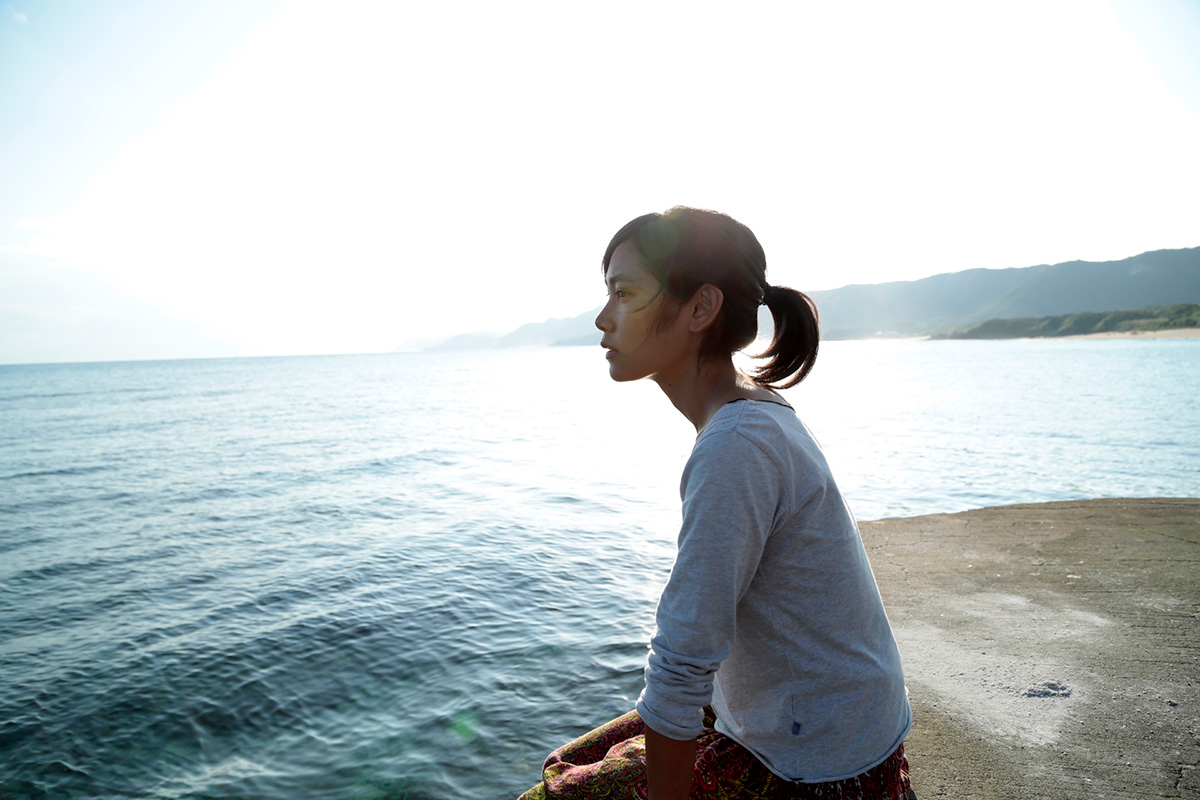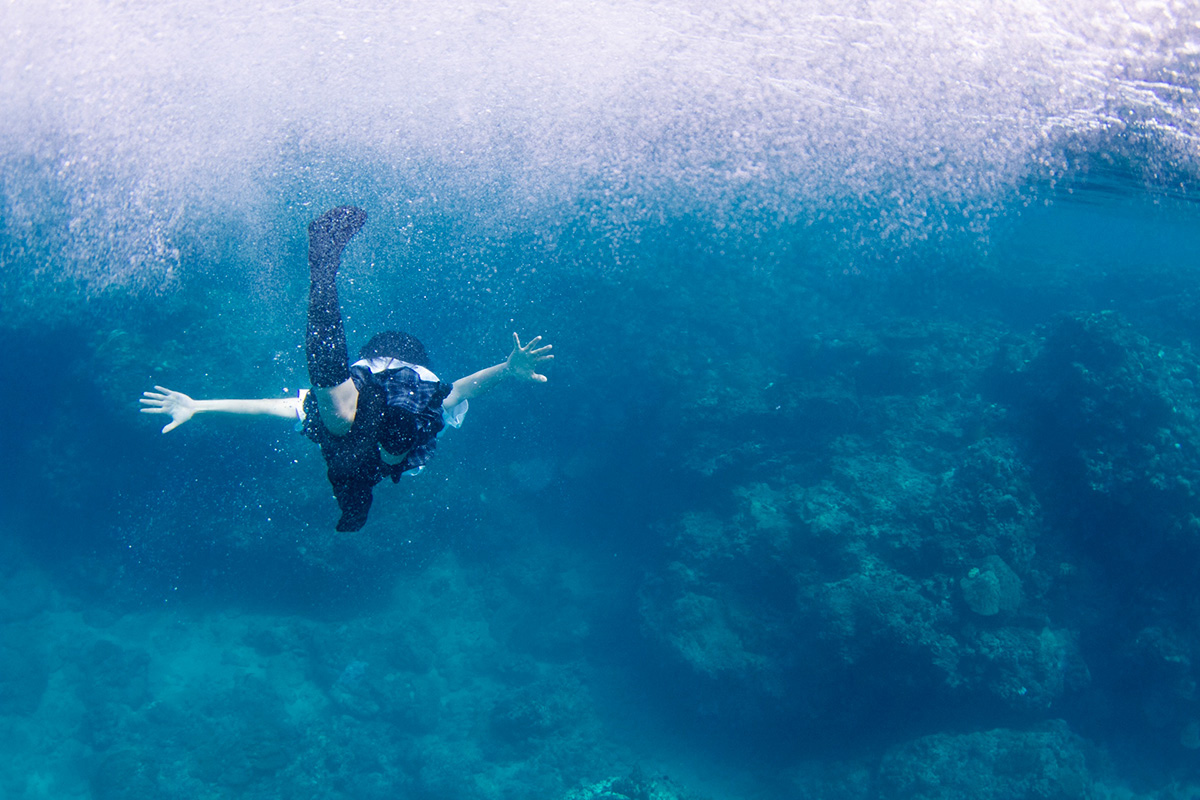Unveiled at Cannes Nine years ago but not released theatrically until now. Premiered on VOD & digital MARCH 3, 2023. Streaming on Prime Video, Amazon, iTunes, Google Pay, VUDU Fandango, AppleTV, kanopy, DirectTV.
Imagine getting into a sublime luxury car with a manual stick shift. First gear gets you going. Second gear gets you going, faster. And third gear? Cowabunga sans the Sturm und Drang. I luv this movie.
The headline for this article warns audiences that Naomi Kawase’s STILL THE WATER slowpokes in an exquisite storytelling style that will test their patience. First-rate cinematography and moviemaking, however, can assuage angst if audience members don’t give up too soon.
The director’s movies have been described as “meditative” by enthusiasts who like them and “slow” or ‘boring” by people who don’t, one reviewer writes. Some even call her films “soporific.” WORD readers should ignore the cynics and naysayers.
STILL THE WATER’s aesthetics and existential properties add to its transcendence and audiences should prepare for but not get upset with what appears or feels like over-their-heads abstract symbolism for the first two-parts of the film. The first third of the movie – regarding acting, character, conflict, plot development, setting and theme – could have been 20 minutes instead of 40 – not that the cinematography and filmmaking are flawed but scenes linger and linger and linger.
The lingering transfigures as the storytelling progresses and becomes absorbing.
The second-third of the movie could have been 20 minutes instead of 40 yet it picks up speed. And the last third? Cowabunga! You will be so glad that you stayed for the first 120-minutes. STILL THE WATER is not lugubrious but is definitely melancholic and that’s because it’s about life and death and what it all means or could mean in between. It has its upbeat moments but let’s face it, we’re all inexorably headed for the light at the end of the tunnel.
A Synopsis of Sorts
On the subtropical Japanese island of Amami, traditions about nature remain eternal. Following a typhoon and during the full-moon night of traditional dances in August, 16-year-old Kaito (Nijirô Murakami) discovers a dead body floating in the sea. His girlfriend, Kyoko (Junko Abe), will attempt to help him understand this mysterious discovery as she discovers it herself. Together, Kaito and Kyoko will evolve experiencing the interwoven cycles of life, death and love.

Kaito played by Nijirô Murakami and Kyoko played by Jun Yoshinaga sharing a tranquil moment. Picture courtesy of Film Moment
The early scenes serve as a prologue! Kamejiro played by Fujio Tokita slits the throat of a sacrificial goat and the camera lingers, segueing back and forth from the bleeding goat hung upside down to the butchering Kamejiro to the faces of other characters watching the slow death – and so on.
{Lest we forget about the way things are: Calves, cows, and bulls, whether raised for veal, dairy, or beef, are stunned and then hoisted mid-air. Suspended upside down by their legs, their major arteries and veins are severed by knife. At the slaughterhouse, the chickens are shackled and hung upside down. They are then electrocuted in order to stun them before workers slit the chickens’ throats. The voltage on the stunning bath is often set too low to fully stun every bird, and many are.}

The ailing Isa, far fight, played by Miyuki Matsuda, Kyoto’s mother, with her daughter and husband. Courtesy of Film Moment
Butchering animals for food is part of the rhythm of life – though PETA insists otherwise.This opening scene is repeated later on, and, if you can believe it, there is a kind of cosmic empathy that makes characters in this later scene plus members of the audience feel for the upside down, bleeding goat.
The name STILL THE WATER can sound deceptive or contradictory like it’s a going “gentle-into-that good-night” movie but the good night, like Mother Nature, has its turbulence and the characters in this film have to deal with tsunamis in many forms.
One of the great pleasures watching STILL THE WATER are the inexplicabilities and baffling images in many scenes obviously ripe with significance and meaning but probably best discerned by the filmmakers. Nevertheless, some can be interpreted, or, what appears confusing can be resolved. Regarding the others that are stingily enigmatic, the savvy learn to make peace as if they are koans that may eventually be resolved.
English Subtitles for this Story
The two main characters, teenagers, are Kaito played by Nijirô Murakami and Kyoko played by Jun Yoshinaga. They are precocious for their ages yet in the grips of youthful emotions which can be an ethereal world of teen angst were passions have yet to be tempered by experiences leading to wisdom and understanding about themselves and the world around them.
Director Naomi Kawase has us there in her grips, watching and feeling their sincere search for meaning in experiences that can seem inexplicable or without rhyme or reason. “One discussion between them,” writes an unsympathetic Matt Zoller Seitz of RogerElber.com, “Kyoko bluntly asks why people are born, live, and then die.”
“Kyoto wants to know because her mother has just gotten a terminal diagnosis, and Kaito says he doesn’t have the answer, but naively reassures his girlfriend that her mother can’t die because she’s a shaman.”
They live in the Japanese coastal village of Amami-Oshima, known for humongous waves that lure surfers. One night they plan to meet near a seawall but after Kaito shows up first, he fleas when he sees a man’s body floating in the water. Police seal off the beach.
Suicide? Murder? The sealed off beach hardly thwarts Kyoto who, wearing her school uniform, dives into the water and swims underwater around the reefs with a grace and elan that is transfixing, like she belongs there, as if she’s done this before. Whoa! What’s that about?
That’s one of many enigmatic scenes, if not also reflecting a director’s idiosyncratic flair, that is not easily grasped at first. Audiences in those moments can do what this reviewer did: Let those confluences of time and space viscerally roll over you just as the many segues do to rolling ocean waves and sweeping scenes of island sand and trees and islanders engaged in perplexing dialogue about life and death and mysteries.
Kyoto’s mother Isa, played by Miyuki Matsuda, is a local shaman who is being treated for a terminal illness that might be cancer. A shaman in this movie is a spiritual leader who stands on the precipice between life and death, and can see in both directions and carries a great burden because of it.
Gregg W. Morris can be reached at gregghc@comcast.net, profgreggwmorris@gmail.com


